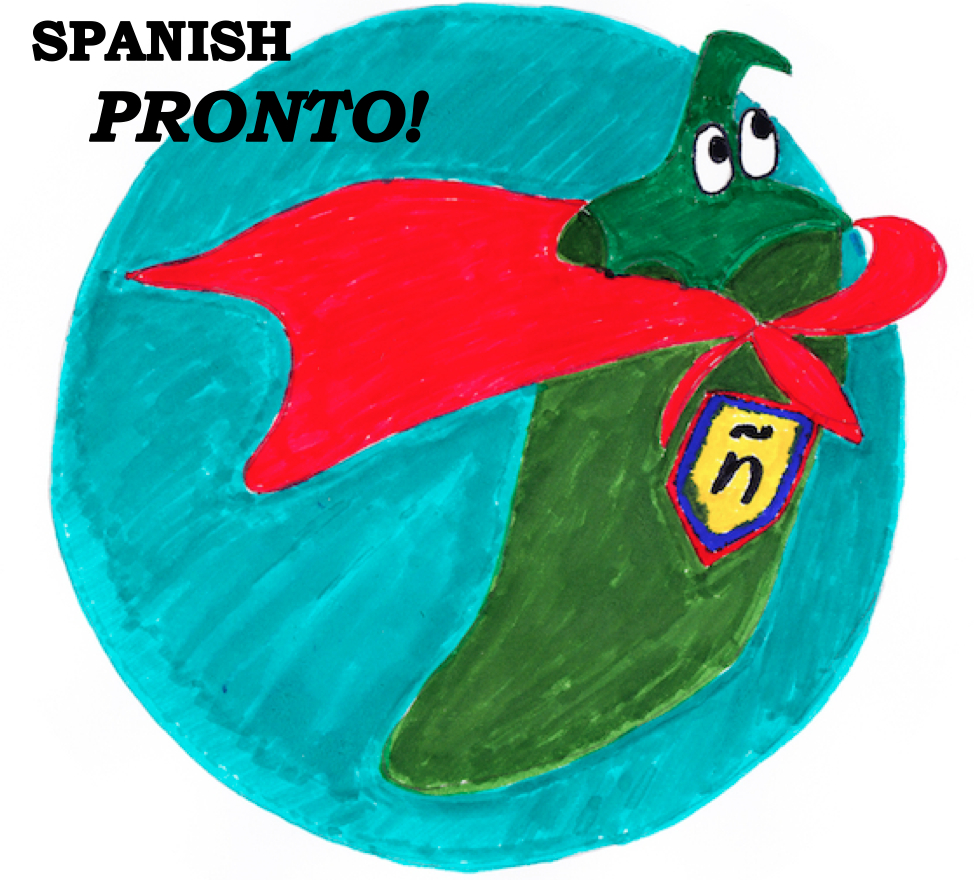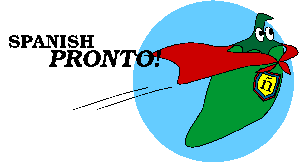
 | START LEARNING 500 OF THE MOST COMMON SPANISH WORDS TODAY! FREE! |
 |
Spanish Pronto!: New Spanish AlphabetThe Spanish alphabet—by agreement of the 22 member countries of the Association of Spanish Language Academies on November 28, 2010, at the Guadalajara International Book Fair—has been changed as follows: "Ch" and "ll," which had earlier ceased to be considered letters for purposes of alphabetization, but had remained letters of the alphabet, are now formally eliminated from the Spanish alphabet, leaving the Spanish alphabet with just the following 27 letters (the 26 letters of the English alphabet, plus the letter ñ [spelled "eñe" and pronounced "EH-nyay"]). The official Spanish alphabet: a, b, c, d, e, f, g, h, i, j, k, l, m, n, ñ, o, p, q, r, s, t, u, v, w, x, y, z. |
The Spanish letter names are the following:
a (a), be (b), ce (c), de (d), e (e), efe (f), ge (g), hache (h), i (i), jota (j), ka (k), ele (l), eme (m), ene (n), eñe (ñ), o (o), pe (p), cu (q), erre (r), ese (s), te (t), u (u), uve (v), doble uve (w), equis (x), ye (y), zeta (z)
Spanish letter name pronunciation*—how to pronounce the Spanish alphabet—is as follows:
AH (a), BAY (b), SAY [THAY, in Spain] (c), DAY (d), EY (e), EH-fay (f), HAY (g), AH-chay (h), EE (i), HOH-tah (j), KAH (k), EH-lay (l), EH-may (m), EH-nay (n), EH-nyay (ñ), OH (o), PAY (p), COO (q), EH-rray (r), EH-say (s), TAY (t), OOH (u), OOH-bay (v), DOH-blay OOH-bay (w), EH-kees (x), YAY (y), SAY-tah [THAY-tah, in Spain] (z).
*These pronunciations are spelled in a way that will allow English speakers to pronounce these Spanish letter names as correctly as possible. For example, an English speaker seeing "bay" will tend to pronounce the English word "bay" (which would be correct), but a Spanish speaker seeing "bay" will read it as resembling the English word "bye" (which would not be correct). EY here means the sound in "hey"; EH means the "short e" as in "EFF" (f), or "EM" (m).
Changes to the letter names: As of November 28, 2010, "W" is now officially called "doble uve" (although in the past it has also been called "uve doble," "doble ve," and "doble u"), and "Y" is now officially called "ye" (although it has traditionally been called "i griega" ["Greek i"]). These new official Spanish letter names are considered recommendations, not requirements (i.e., the traditional letter names are not considered "wrong"), but the expectation of the Real Academia Española (Spanish Royal Academy, or RAE) is that teachers will teach the official version which, in the RAE's view, should make things simpler for students of Spanish, especially because each letter will now have just one, unique name, and that name will be the same in every Spanish-speaking country.
For information on how to pronounce these letters when they appear in words (as opposed to pronouncing their names), see the pronunciation guide at Spanish Pronto!: Basic Study Reference
 | START LEARNING 500 OF THE MOST COMMON SPANISH WORDS TODAY! FREE! |
Please mail comments or suggestions, or questions about Spanish, to: chris@spanishpronto.com